- Home
- Andre Norton
The Andre Norton Megapack
The Andre Norton Megapack Read online
COPYRIGHT INFO
The Andre Norton Megapack is copyright © 2012 by Wildside Press LLC.
* * * *
“The People of the Crater” was originally published under the pseudonym “Andrew North” in Fantasy Book, Vol. 1, No. 1 (1947).
“The Gifts of Asti” was originally published under the pseudonym “Andrew North” in Fantasy Book, Vol. 1, No. 3 (1948).
Plague Ship was originally published in 1956.
Star Born was originally published in 1957.
“All Cats Are Gray” was originally published in Fantastic Universe Science Fiction, August–September 1953
Murders for Sale (written with Grace Allen Hogarth) was originally published in 1953.
The Time Traders was originally published in 1958.
Voodoo Planet was originally published in 1959.
Storm Over Warlock was originally published in 1960.
Star Hunter was originally published in 1961.
The Defiant Agents was originally published in 1962.
Key Out of Time was originally published in 1963.
Ralestone Luck was originally published in 1938.
Ride Proud, Rebel! was originally published in 1961.
Rebel Spurs was originally published in 1962.
ABOUT ANDRE NORTON
Andre Alice Norton, née Alice Mary Norton (February 17, 1912 – March 17, 2005) was an American science fiction and fantasy author (with some works of historical fiction and contemporary fiction) under the noms de plume Andre Norton, Andrew North, and Allen Weston. Norton published her first novel in 1934 and was the first woman to receive the Gandalf Grand Master Award from the World Science Fiction Society in 1977. She won the Damon Knight Memorial Grand Master Award from the Science Fiction and Fantasy Writers of America (SFWA) association in 1983.
Biography
Alice Mary Norton was born in Cleveland, Ohio. Her parents were Adalbert Freely Norton, who owned a rug company, and Bertha Stemm Norton. She began writing at Collinwood High School in Cleveland, under the tutelage of Miss Sylvia Cochrane. She was the editor of a literary page in the school’s paper called The Collinwood Spotlight for which she wrote short stories. During this time, she wrote her first book—Ralestone Luck, which was eventually published as her second novel in 1938 (the first being The Prince Commands in 1934).
After graduating from high school in 1930, Norton planned to become a teacher and began studying at Flora Stone Mather College of Western Reserve University. However, in 1932 she had to leave because of the Depression and began working for the Cleveland Library System,1 where she remained for 18 years, latterly in the children’s section of the Nottingham Branch Library in Cleveland. In 1934, she legally changed her name to Andre Alice Norton, a pen name she had adopted to increase her marketability, since boys were the main audience for fantasy.2 From 1940 to 1941, she worked as a special librarian in the cataloguing department of the Library of Congress, involved in a project related to alien citizenship. The project was abruptly terminated upon the American entry into World War II.
In 1941, she bought a bookstore called the Mystery House in Mount Rainier, Maryland. The business failed and she returned to the Cleveland Public Library until 1950. She then began working as a reader for publisher and editor Martin Greenberg at the Gnome Press company, where she remained until 1958, after which she became a full-time professional author.3
Norton’s first published science fiction, the novella “The People of the Crater,” appeared in Fantasy Book in 1951, under the “Andrew North” byline. Her first fantasy novel, Huon of the Horn, was published by Harcourt Brace under her own byline in 1951. Her first science fiction novel, Star Man’s Son 2250 A.D., appeared in 1952.4
She became a prolific novelist in the 1950s, with many of her books published for the juvenile market, at least in their hardcover editions. She published more than a dozen different sf novel series, but her longest, and longest running project was the “Witch World” sequence, which began as a set of six novels as paperback originals from 1963 to 1968, then grew, beginning in the 1970s, to include several dozen volumes, including collaborations and shared-world anthologies.5
Norton was twice nominated for the Hugo Award, in 1964 for the novel Witch World and in 1967 for the novelette “Wizard’s World.” She was nominated three times for the World Fantasy Award for lifetime achievement, winning the award in 1998. Norton won a number of other genre awards, and regularly had works appear in the Locus annual “best of year” polls.6
She was a member of the Swordsmen and Sorcerers’ Guild of America (SAGA), a loose-knit group of heroic fantasy authors founded in the 1960s, some of whose works were anthologized in Lin Carter’s Flashing Swords! anthologies.
In later years, as Norton’s health became uncertain, she moved to Florida in November 1966, and then to Murfreesboro, Tennessee. From February 21, 2005, she was under hospice care. She died at home on March 17, 2005, of congestive heart failure.
Her final complete novel, Three Hands for Scorpio, was published on April 1, 2005. She was collaborating with Jean Rabe on the sequel to her 1979 novel Quag Keep, the Greyhawk novel Return to Quag Keep, when she died. Return to Quag Keep was completed by Rabe and published in 2006.
On February 20, 2005, the Science Fiction and Fantasy Writers of America, which had earlier honored her with its Grand Master Award in 1983, announced the creation of the Andre Norton Award, to be given each year for an outstanding work of fantasy or science fiction for the young adult literature market, beginning in 2006. While the Andre Norton Award is not a Nebula Award, the eligibility requirements and award procedures are the same as those for the Nebula Awards.
Often called the Grande Dame of Science Fiction and Fantasy by biographers such as J. M Cornwell7 and organizations such as Science Fiction and Fantasy Writers of America,8 Publishers Weekly,9 and Time, Andre Norton wrote novels for over 70 years. She had a profound influence on the entire genre, having over 300 published titles read by at least four generations of science fiction and fantasy readers and writers. Notable authors who cite her influence include Greg Bear, John Gregory Betancourt, Lois McMaster Bujold, C. J. Cherryh, Cecilia Dart-Thornton, Tanya Huff, Mercedes Lackey, Charles de Lint, Joan D. Vinge, David Weber, K. D. Wentworth, and Catherine Asaro.
Recurring Motifs
Norton started out writing juvenile historical fiction and adventure, and then moved into fantasy and finally science fiction. Again and again in her works, alienated outsiders undertake a journey through which they realize their full potential; this emphasis on the rite of passage continued her association in many readers’ minds with young adult fiction, although she became a best seller to adults.10
In most Norton books, whether science-fiction or fantasy, the plot takes place in the open countryside, with only short episodes in a city environment. Protagonists usually move about singly or in small groups, and in conflict situations they are more often scouts, spies, or guerrillas rather than regular soldiers in large military formations.11
As could be expected of such characters, they tend to be resourceful and capable of taking independent initiative. In some books, protagonists are introduced already in possession of such characteristics. In others the protagonists (often young) are thrust into situations where they must develop them quickly, and invariably succeed at it.
Many planets in the books are Earthlike places, where humans can live without special protection, and have extensive flora and fauna which are described in considerable detail and often have substantial bearing on the plot. Airless planets and ones with unbreathable atmospheres are sometimes mentioned in passing, but are virtually never the main scene of a Norton book (an exception is Night of Masks). In man
y of her books, especially her mid-period and later fantasies, such as most of the Witch World series, there are settings described similarly, with ancient stone highways left by unknown civilizations, flanked by half-fallen walls overgrown with vines, and often studded with tall pillars topped by mythical shapes. These vistas are universally presented as almost vibrating with magical power. Another common setting, in both fantasies and science fiction, is of a room filled with alien super-scientific equipment, often where something evil (such as experimentation on humans or other living creatures) has gone on, or is going on.
A common theme in the books is the presence of sympathetically presented feudal and tribal cultures. In several books Native American tribes and their various analogues are given a chance to be more successful than they were in actual American history. (Norton often told friends that she was proud of her little bit of Native American ancestry.) Nonhuman creatures and cultures are usually presented sympathetically, with human protagonists sometimes supporting them against oppressive human authorities. In contrast, several books present technological and mechanized cultures as negative or even positively evil.
With her 1965 book Year of the Unicorn (third in the High Hallack spinoff of her Witch World series), she used a young woman as the protagonist, which was at the time uncommon for American works of fantasy.
An important role in Norton’s books is often given to animals—both ordinary terrestrial ones, such as cats (with whom she had much personal experience—see List of fictional cats#Andre Norton) and exotic fictional ones, whose characteristics are meticulously worked out. Many of Norton’s animals are highly intelligent without being anthropomorphic, acting as virtually full partners to the human protagonists and in many books forming telepathic links with them.
Some background elements, such as the use of “Credits” as a unit of currency and of the lethal “Blasters” and the non-lethal “Stunners” as the main hand-weapons, are common to many of Norton’s science fiction books, even when they are not set in precisely the same future.
A fictional board and counter game called “Stars and Comets” appears in many Norton science fiction books. However, only fleeting hints of the rules are revealed. Counters styled as either “stars” or “comets” move across the board taking opponents’ pieces. The rules of movement and capture seem to be very complex allowing hidden strategies and sudden reversals of fortune. It may be that there are both elements of skill and chance. Often, it is not the game being played itself which features, but references to it as an analogy of some plot situation. Its use helps to reinforce the alien culture being portrayed, and also gives the reader a sense of continuity between books portraying differing people and places.
Equally, an interstellar refugee camp turned slum of dubious reputation called the Dipple provides the starting point for a number of planet stories, as the number of desperate young people seeking any escape from its poverty is high.
Star Man’s Son (a.k.a. Daybreak 2250 A.D.), the story of a young man’s quest through a post-apocalyptic landscape, has been retold endlessly, in print and in film, though Norton never received proper recognition for developing this theme.
She also developed the concept of traveling through alternate worlds in The Crossroads of Time. In the Time Trader series, she explored Celtic Europe, and Ice Age America, synthesizing of anthropology, archeology, and hard science fiction, and this series must also be seen as a pivotal exploration of time travel, as a method of fictionally exploring lost cultures. The second book in the Time Trader series, Galactic Derelict, features the use of recovered alien technology, to enable human travel to the stars, and this theme is also very recurrent, with definite features developed by Andre Norton.
High Hallack Library
The High Hallack Library was a facility that Andre Norton was instrumental in organizing and opening. Designed as a research facility for genre writers, and scholars of “popular” literature (the genres of science fiction, fantasy, mystery, western, romance, gothic, or horror), it was located near Norton’s home in Murfreesboro, Tennessee.
The facility, named after one of the continents in Norton’s Witch World series, was home to over 10,000 texts, videos and various other media. Attached to the facility were three guest rooms, allowing authors and scholars the chance to stay on-site to facilitate their research goals.
The facility was opened on February 28, 1999, and operated until March 2004. Most of the collection was sold during the closing days of the facility. The declining health of Andre Norton was one of the leading causes of its closing.
1 Dennis Mclellan, “Andre Norton, 93; A Prolific Science Fiction, Fantasy Author,” Obituary, Los Angeles Times, Mar. 19, 2005.
2 Ibid.
3 Christopher Lehmann-Haupt, “Andre Norton Dies at 93; a Master of Science Fiction,” Obituary, New York Times, Mar. 18, 2005.
4 “Andre Norton (1912-2005)”, Locus, April 2005, pp. 5, 65.
5 Ibid.
6 “Locus Index to SF Awards”. Locusmag.com. Retrieved 2011-12-22.
7 “An Interview with Andre Norton”. Theroseandthornezine.com. Retrieved 2011-12-22.
8 Officia SFWA bibliography.
9 Publishers Weekly.
10 Christopher Lehmann-Haupt, “Andre Norton Dies at 93; A Master of Science Fiction,” The New York Times Books, Mar. 18, 2005
11 A. Jakes, “Fictional Soldiers”, pp. 46, 81.
PART 1: SCIENCE FICTION
THE PEOPLE OF THE CRATER (1947)
THE GIFTS OF ASTI (1948)
ALL CATS ARE GRAY (1953)
PLAGUE SHIP (1956)
STAR BORN (1957)
THE TIME TRADERS (1958)
VOODOO PLANET (1959)
STORM OVER WARLOCK (1960)
STAR HUNTER (1961)
THE DEFIANT AGENTS (1962)
KEY OUT OF TIME (1963)
THE PEOPLE OF THE CRATER (1947)
CHAPTER ONE
Through the Blue Haze
Six months and three days after the Peace of Shanghai was signed and the great War of 1965-1970 declared at an end by an exhausted world, a young man huddled on a park bench in New York, staring miserably at the gravel beneath his badly worn shoes. He had been trained to fill the pilot’s seat in the control cabin of a fighting plane and for nothing else. The search for a niche in civilian life had cost him both health and ambition.
A newcomer dropped down on the other end of the bench. The flyer studied him bitterly. He had decent shoes, a warm coat, and that air of satisfaction with the world which is the result of economic security. Although he was well into middle age, the man had a compact grace of movement and an air of alertness.
“Aren’t you Captain Garin Featherstone?”
Startled, the flyer nodded dumbly.
From a plump billfold the man drew a clipping and waved it toward his seat mate. Two years before Captain Garin Featherstone of the United Democratic Forces had led a perilous bombing raid into the wilds of Siberia to wipe out the vast expeditionary army secretly gathering there. It had been a spectacular affair and had brought the survivors some fleeting fame.
“You’re the sort of chap I’ve been looking for,” the stranger folded the clipping again, “a flyer with courage, initiative and brains. The man who led that raid is worth investing in.”
“What’s the proposition?” asked Featherstone wearily. He no longer believed in luck.
“I’m Gregory Farson,” the other returned as if that should answer the question.
“The Antarctic man!”
“Just so. As you have probably heard, I was halted on the eve of my last expedition by the sudden spread of war to this country. Now I am preparing to sail south again.”
“But I don’t see—”
“How you can help me? Very simple, Captain Featherstone. I need pilots. Unfortunately the war has disposed of most of them. I’m lucky to contact one such as yourself—”
And it was as simple as that. But Garin didn’t really believe th
at it was more than a dream until they touched the glacial shores of the polar continent some months later. As they brought ashore the three large planes he began to wonder at the driving motive behind Farson’s vague plans.
When the supply ship sailed, not to return for a year, Farson called them together. Three of the company were pilots, all war veterans, and two were engineers who spent most of their waking hours engrossed in the maps Farson produced.
“Tomorrow,” the leader glanced from face to face, “we start inland. Here—” On a map spread before him he indicated a line marked in purple.
“Ten years ago I was a member of the Verdane expedition. Once, when flying due south, our plane was caught by some freakish air current and drawn off its course. When we were totally off our map, we saw in the distance a thick bluish haze. It seemed to rise in a straight line from the ice plain to the sky. Unfortunately our fuel was low and we dared not risk a closer investigation. So we fought our way back to the base.
“Verdane, however, had little interest in our report and we did not investigate it. Three years ago that Kattack expedition hunting oil deposits by the order of the Dictator reported seeing the same haze. This time we are going to explore it!”
“Why,” Garin asked curiously, “are you so eager to penetrate this haze?—I gather that’s what we’re to do—”
Farson hesitated before answering. “It has often been suggested that beneath the ice sheeting of this continent may be hidden mineral wealth. I believe that the haze is caused by some form of volcanic activity, and perhaps a break in the crust.”
Garin frowned at the map. He wasn’t so sure about that explanation, but Farson was paying the bills. The flyer shrugged away his uneasiness. Much could be forgiven a man who allowed one to eat regularly again.
Four days later they set out. Helmly, one of the engineers, Rawlson, a pilot, and Farson occupied the first plane. The other engineer and pilot were in the second and Garin, with the extra supplies, was alone in the third.

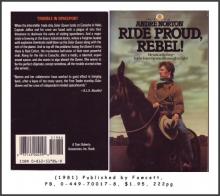 Ride Proud, Rebel!
Ride Proud, Rebel!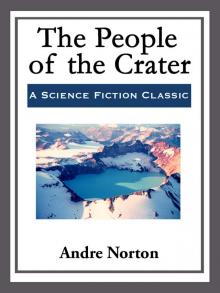 The People of the Crater
The People of the Crater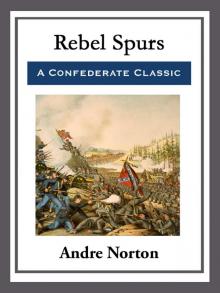 Rebel Spurs
Rebel Spurs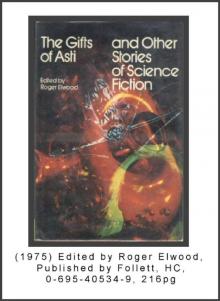 The Gifts of Asti
The Gifts of Asti Space Service
Space Service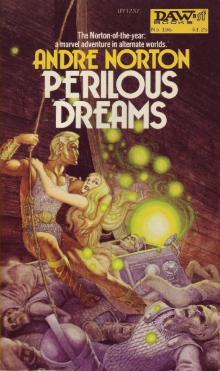 Perilous Dreams
Perilous Dreams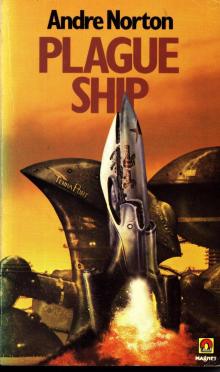 Plague Ship
Plague Ship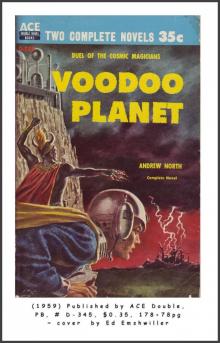 Voodoo Planet
Voodoo Planet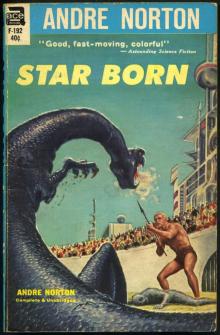 Star Born
Star Born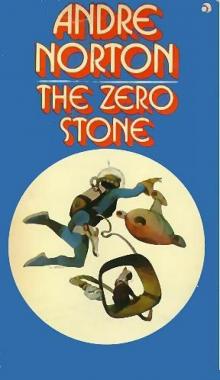 The Zero Stone
The Zero Stone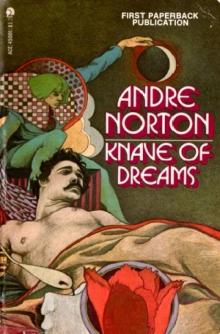 Knave of Dreams
Knave of Dreams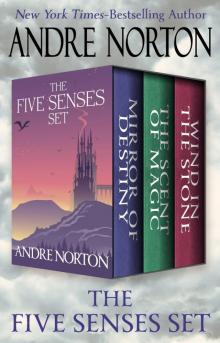 Five Senses Box Set
Five Senses Box Set The Time Traders
The Time Traders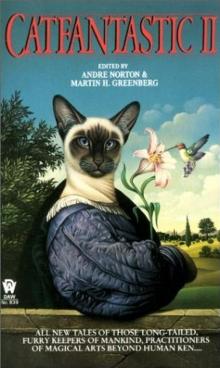 Catfantastic II
Catfantastic II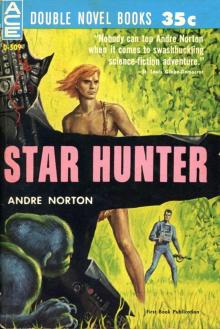 Star Hunter
Star Hunter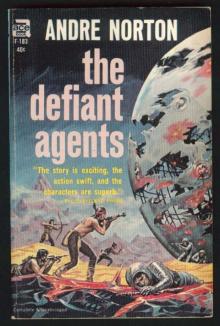 The Defiant Agents
The Defiant Agents Key Out of Time
Key Out of Time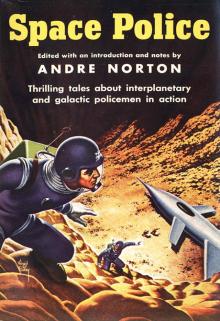 Space Police
Space Police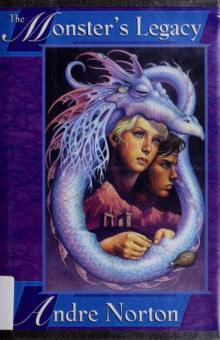 The Monster's Legacy
The Monster's Legacy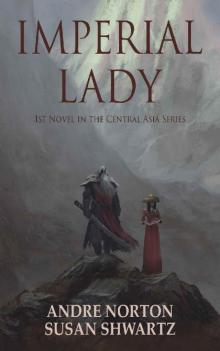 Imperial Lady (Central Asia Series Book 1)
Imperial Lady (Central Asia Series Book 1)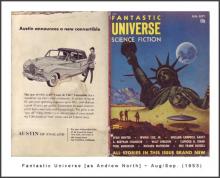 All Cats Are Gray
All Cats Are Gray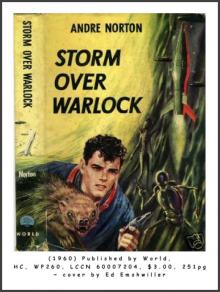 Storm Over Warlock
Storm Over Warlock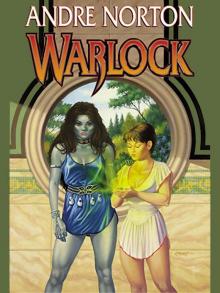 Warlock
Warlock Firehand
Firehand Echoes In Time # with Sherwood Smith
Echoes In Time # with Sherwood Smith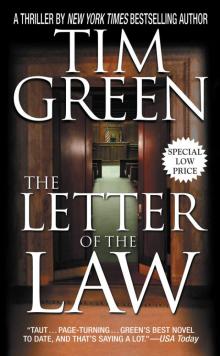 Ciara's Song
Ciara's Song The Sioux Spaceman
The Sioux Spaceman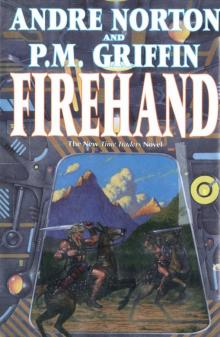 Firehand # with Pauline M. Griffin
Firehand # with Pauline M. Griffin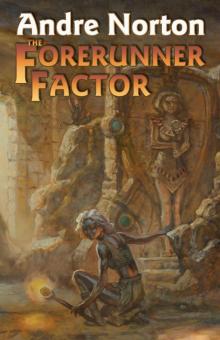 The Forerunner Factor
The Forerunner Factor The Jargoon Pard (Witch World Series (High Hallack Cycle))
The Jargoon Pard (Witch World Series (High Hallack Cycle))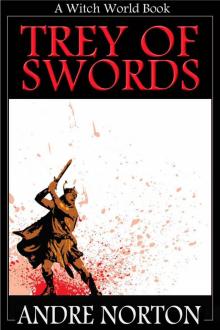 Trey of Swords (Witch World (Estcarp Series))
Trey of Swords (Witch World (Estcarp Series))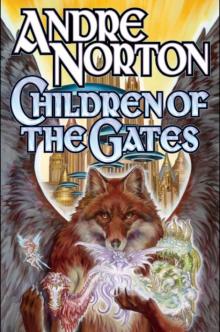 Children of the Gates
Children of the Gates Atlantis Endgame
Atlantis Endgame Red Hart Magic
Red Hart Magic Steel Magic
Steel Magic Beast Master's Circus
Beast Master's Circus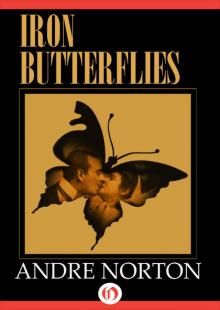 Iron Butterflies
Iron Butterflies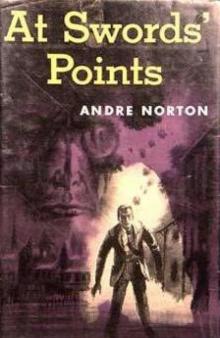 At Swords' Points
At Swords' Points The Iron Breed
The Iron Breed A Crown Disowned
A Crown Disowned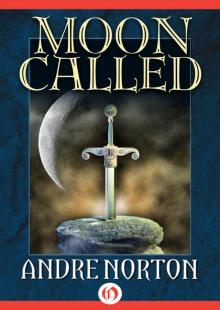 Moon Called
Moon Called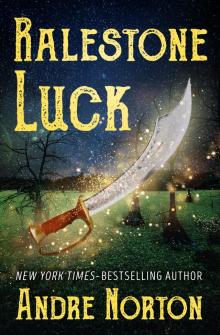 Ralestone Luck
Ralestone Luck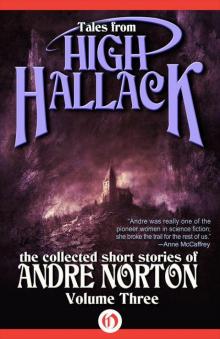 Tales From High Hallack, Volume 3
Tales From High Hallack, Volume 3 FORERUNNER FORAY
FORERUNNER FORAY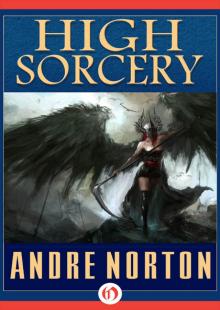 High Sorcery
High Sorcery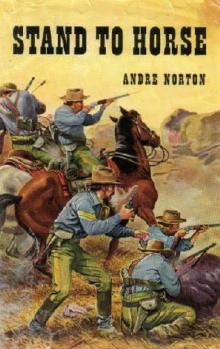 Stand to Horse
Stand to Horse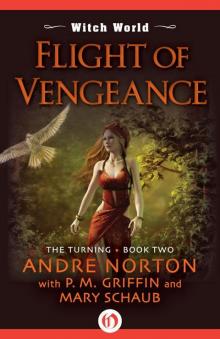 Flight of Vengeance (Witch World: The Turning)
Flight of Vengeance (Witch World: The Turning)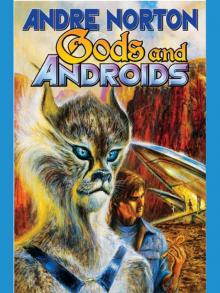 Gods and Androids
Gods and Androids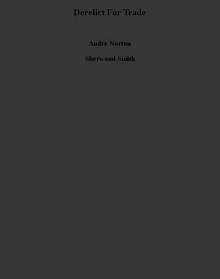 Derelict For Trade
Derelict For Trade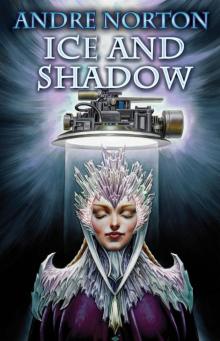 Ice and Shadow
Ice and Shadow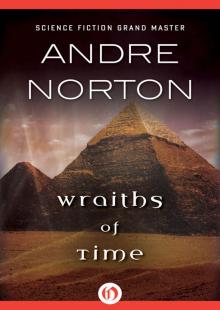 Wraiths of Time
Wraiths of Time Quag Keep
Quag Keep The Scent Of Magic
The Scent Of Magic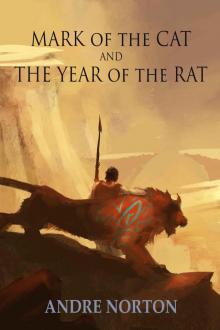 Mark of the Cat and Year of the Rat
Mark of the Cat and Year of the Rat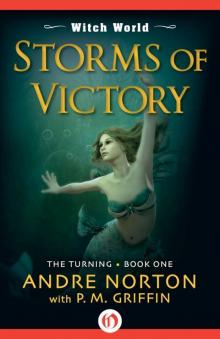 Storms of Victory (Witch World: The Turning)
Storms of Victory (Witch World: The Turning)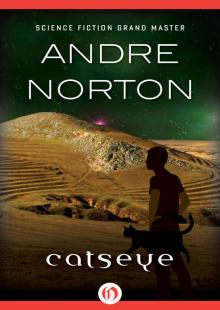 Catseye
Catseye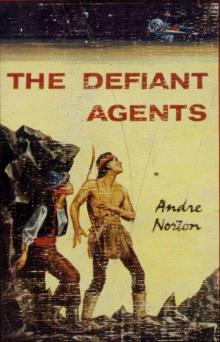 The Defiant Agents tt-3
The Defiant Agents tt-3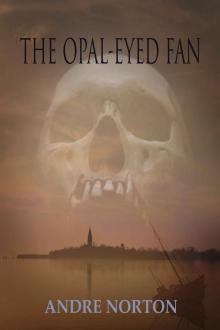 The Opal-Eyed Fan
The Opal-Eyed Fan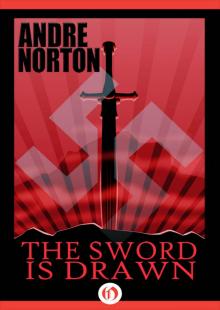 Sword Is Drawn
Sword Is Drawn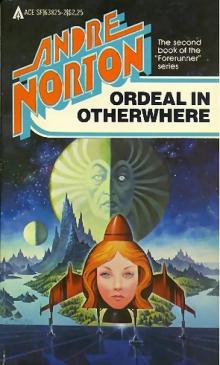 ORDEAL IN OTHERWHERE
ORDEAL IN OTHERWHERE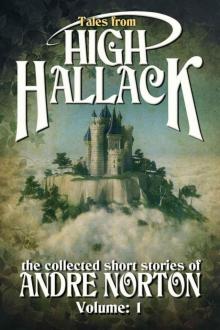 Tales From High Hallack, Volume 1
Tales From High Hallack, Volume 1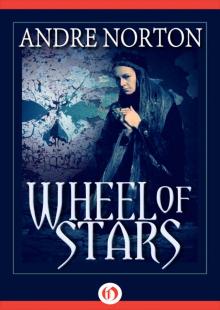 Wheel of Stars
Wheel of Stars On Wings of Magic
On Wings of Magic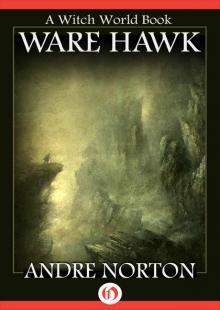 Ware Hawk
Ware Hawk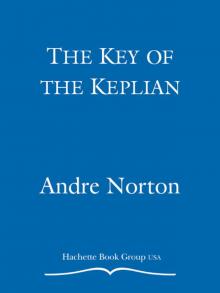 The Key of the Keplian
The Key of the Keplian Ride Proud-Rebel
Ride Proud-Rebel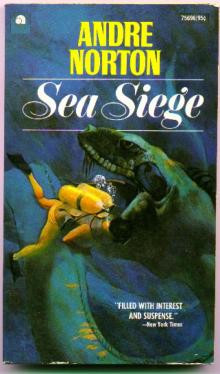 Sea Siege
Sea Siege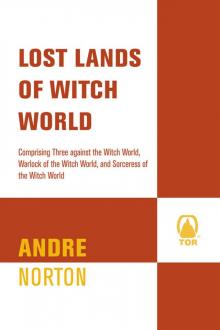 Lost Lands of Witch World
Lost Lands of Witch World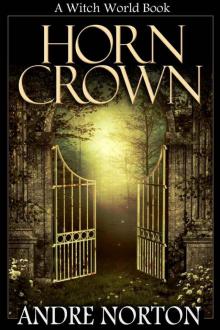 Horn Crown (Witch World: High Hallack Series)
Horn Crown (Witch World: High Hallack Series)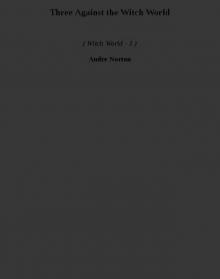 Three Against the Witch World ww-3
Three Against the Witch World ww-3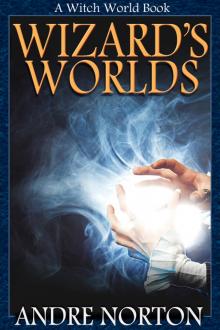 Wizards’ Worlds
Wizards’ Worlds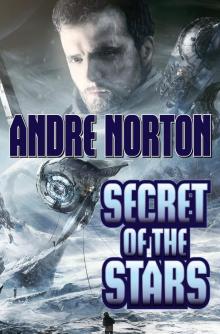 Secret of the Stars
Secret of the Stars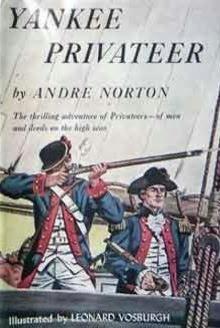 Yankee Privateer
Yankee Privateer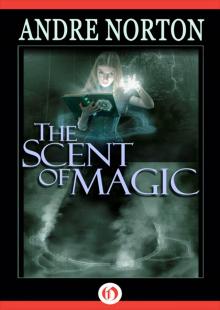 Scent of Magic
Scent of Magic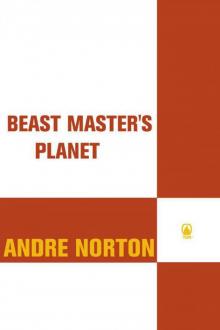 Beast Master's Planet: Omnibus of Beast Master and Lord of Thunder
Beast Master's Planet: Omnibus of Beast Master and Lord of Thunder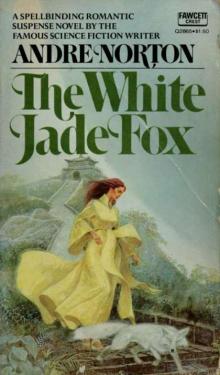 The White Jade Fox
The White Jade Fox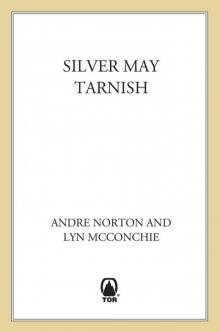 Silver May Tarnish
Silver May Tarnish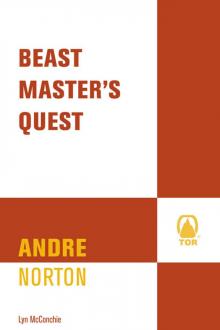 Beast Master's Quest
Beast Master's Quest Knight Or Knave
Knight Or Knave Sargasso of Space (Solar Queen Series)
Sargasso of Space (Solar Queen Series)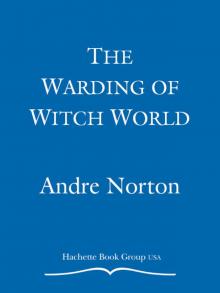 The Warding of Witch World
The Warding of Witch World Uncharted Stars
Uncharted Stars Ten Mile Treasure
Ten Mile Treasure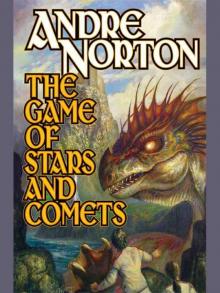 The Game of Stars and Comets
The Game of Stars and Comets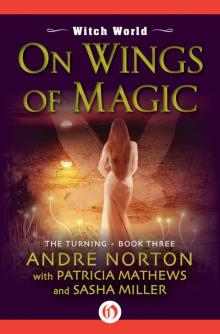 On Wings of Magic (Witch World: The Turning)
On Wings of Magic (Witch World: The Turning)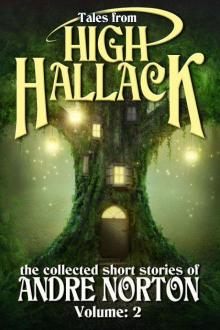 Tales From High Hallack, Volume 2
Tales From High Hallack, Volume 2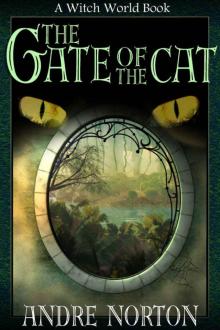 The Gate of the Cat (Witch World: Estcarp Series)
The Gate of the Cat (Witch World: Estcarp Series)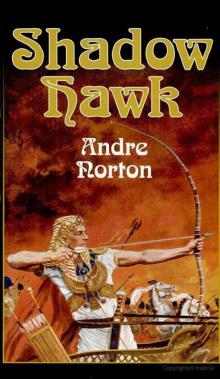 Andre Norton - Shadow Hawk
Andre Norton - Shadow Hawk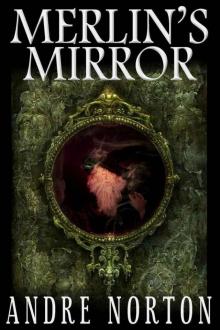 Merlin's Mirror
Merlin's Mirror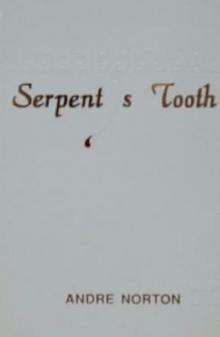 Serpent's Tooth
Serpent's Tooth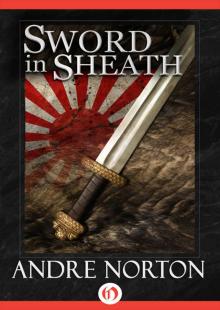 Sword in Sheath
Sword in Sheath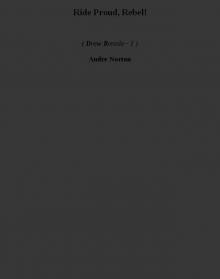 Ride Proud, Rebel! dr-1
Ride Proud, Rebel! dr-1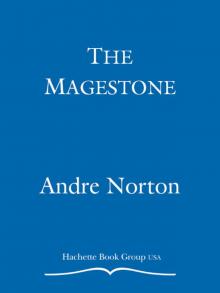 The Magestone
The Magestone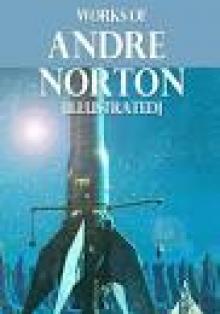 The Works of Andre Norton (12 books)
The Works of Andre Norton (12 books) Andre Norton: The Essential Collection
Andre Norton: The Essential Collection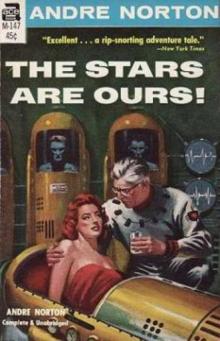 The Stars Are Ours! a-1
The Stars Are Ours! a-1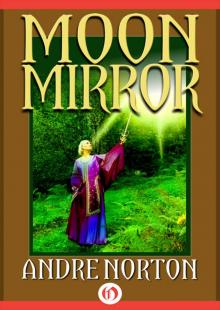 Moon Mirror
Moon Mirror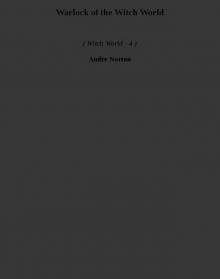 Warlock of the Witch World ww-4
Warlock of the Witch World ww-4 Garan the Eternal
Garan the Eternal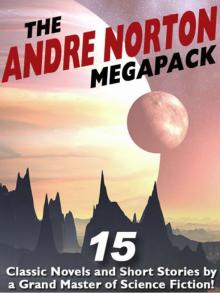 The Andre Norton Megapack
The Andre Norton Megapack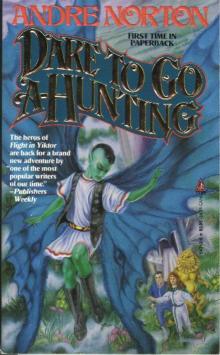 Dare to Go A-Hunting ft-4
Dare to Go A-Hunting ft-4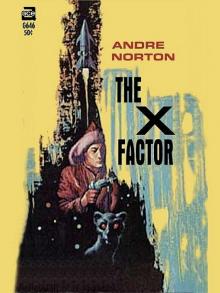 The X Factor
The X Factor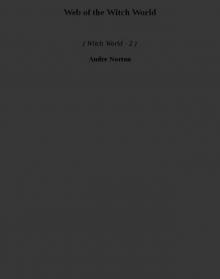 Web of the Witch World ww-2
Web of the Witch World ww-2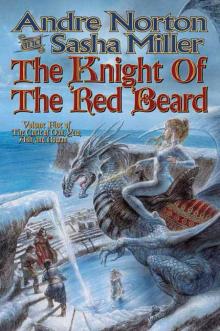 The Knight of the Red Beard-The Cycle of Oak, Yew, Ash and Rowan 5
The Knight of the Red Beard-The Cycle of Oak, Yew, Ash and Rowan 5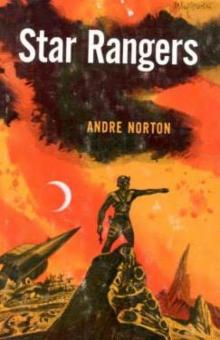 Star Rangers
Star Rangers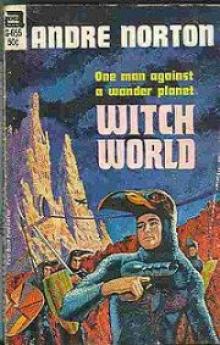 Witch World ww-1
Witch World ww-1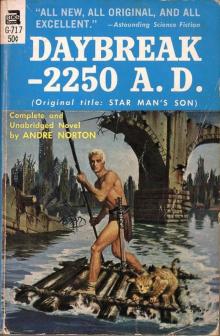 Daybreak—2250 A.D.
Daybreak—2250 A.D. Moonsinger
Moonsinger Redline the Stars sq-5
Redline the Stars sq-5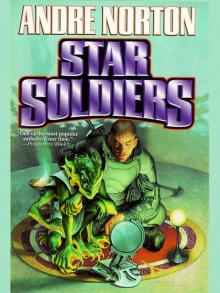 Star Soldiers
Star Soldiers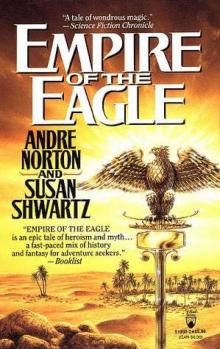 Empire Of The Eagle
Empire Of The Eagle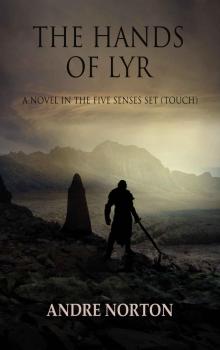 The Hands of Lyr (Five Senses Series Book 1)
The Hands of Lyr (Five Senses Series Book 1)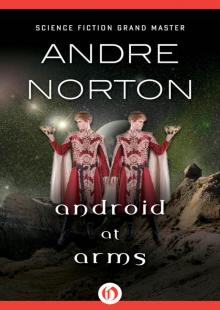 Android at Arms
Android at Arms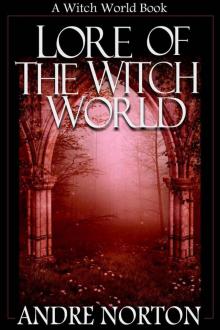 Lore of Witch World (Witch World Collection of Stories) (Witch World Series)
Lore of Witch World (Witch World Collection of Stories) (Witch World Series) Trey of Swords ww-6
Trey of Swords ww-6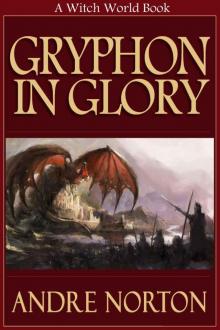 Gryphon in Glory (Witch World (High Hallack Series))
Gryphon in Glory (Witch World (High Hallack Series))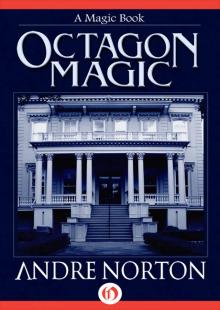 Octagon Magic
Octagon Magic Dragon Magic
Dragon Magic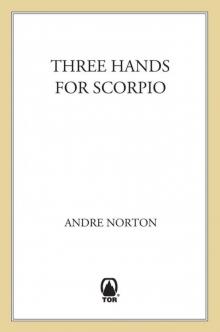 Three Hands for Scorpio
Three Hands for Scorpio The Prince Commands
The Prince Commands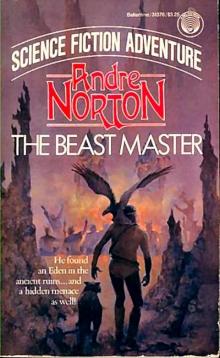 The Beast Master bm-1
The Beast Master bm-1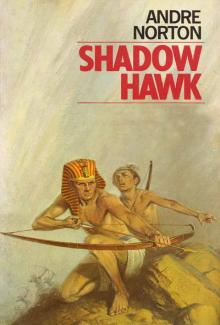 Shadow Hawk
Shadow Hawk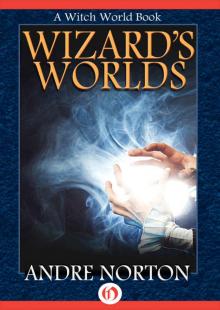 Wizard's Worlds: A Short Story Collection (Witch World)
Wizard's Worlds: A Short Story Collection (Witch World)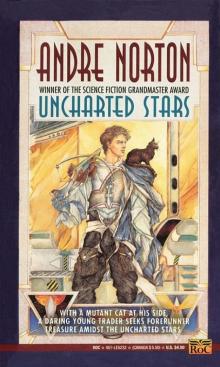 Murdoc Jern #2 - Uncharted Stars
Murdoc Jern #2 - Uncharted Stars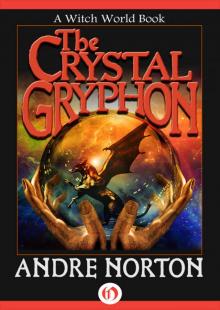 Crystal Gryphon
Crystal Gryphon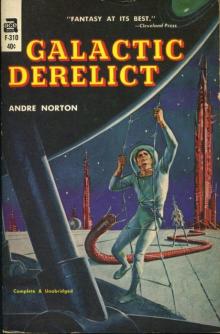 Galactic Derelict tt-2
Galactic Derelict tt-2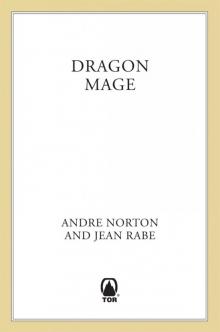 Dragon Mage
Dragon Mage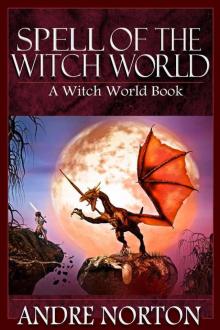 Spell of the Witch World (Witch World Series)
Spell of the Witch World (Witch World Series) Velvet Shadows
Velvet Shadows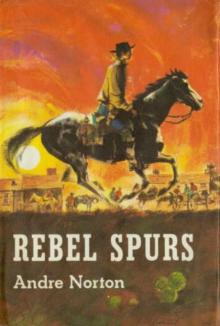 Rebel Spurs dr-2
Rebel Spurs dr-2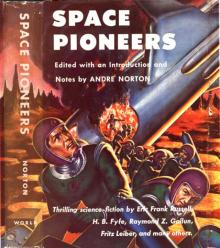 Space Pioneers
Space Pioneers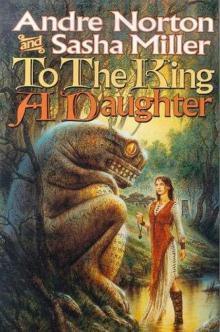 To The King A Daughter
To The King A Daughter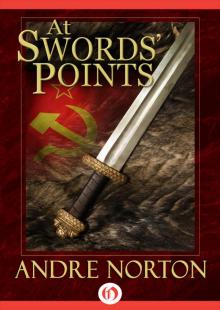 At Swords' Point
At Swords' Point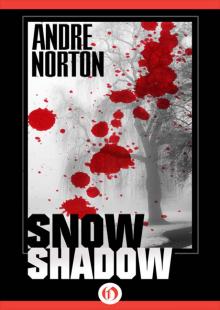 Snow Shadow
Snow Shadow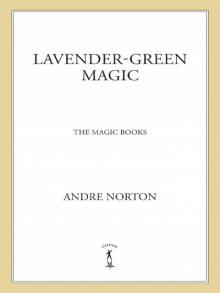 Lavender-Green Magic
Lavender-Green Magic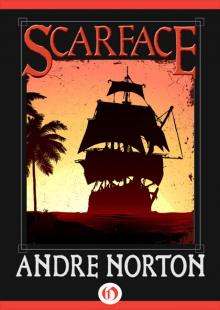 Scarface
Scarface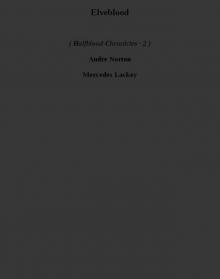 Elveblood hc-2
Elveblood hc-2 Fur Magic
Fur Magic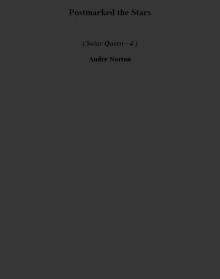 Postmarked the Stars sq-4
Postmarked the Stars sq-4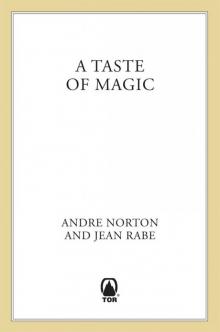 A Taste of Magic
A Taste of Magic Flight in Yiktor ft-3
Flight in Yiktor ft-3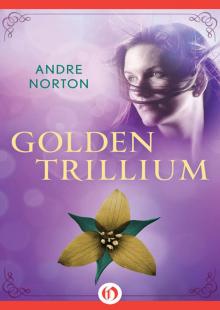 Golden Trillium
Golden Trillium Murders for Sale
Murders for Sale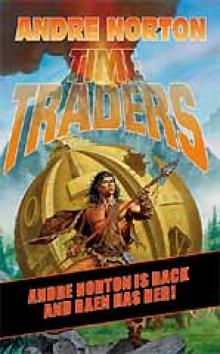 Time Traders tw-1
Time Traders tw-1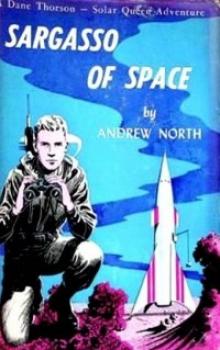 Sargasso of Space sq-1
Sargasso of Space sq-1 Murdoc Jern #1 - The Zero Stone
Murdoc Jern #1 - The Zero Stone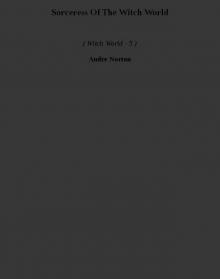 Sorceress Of The Witch World ww-5
Sorceress Of The Witch World ww-5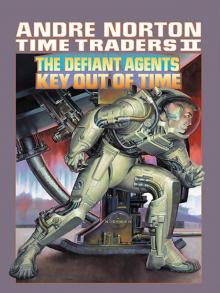 Time Traders II
Time Traders II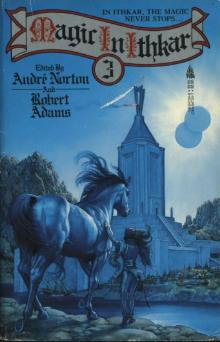 Magic in Ithkar 3
Magic in Ithkar 3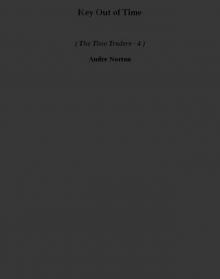 Key Out of Time ttt-4
Key Out of Time ttt-4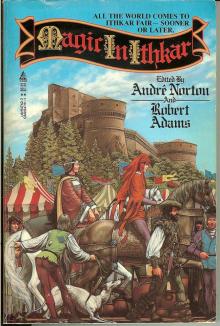 Magic in Ithkar
Magic in Ithkar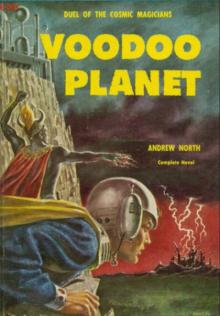 Voodoo Planet vp-1
Voodoo Planet vp-1